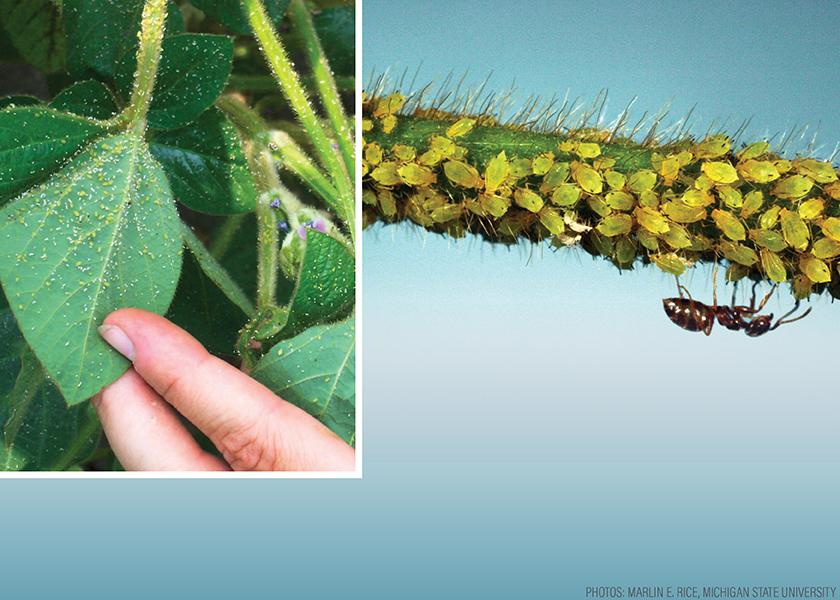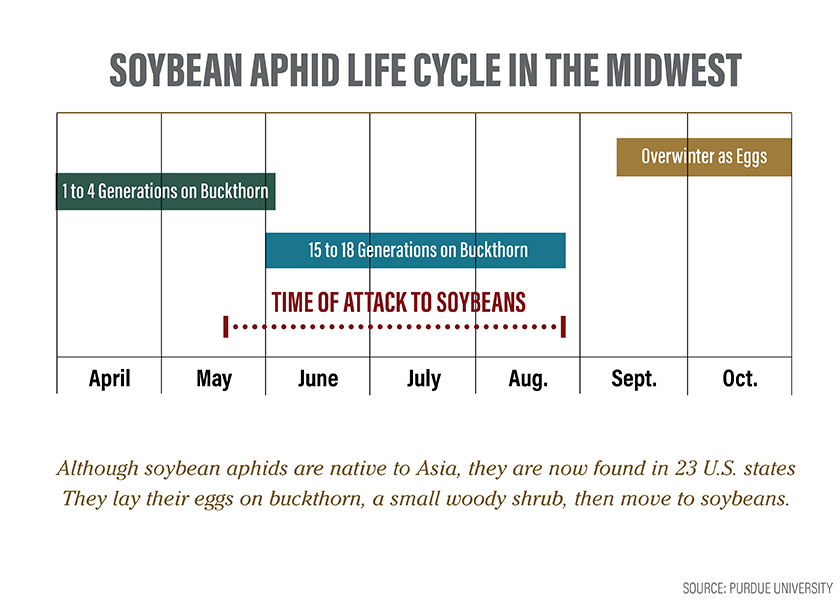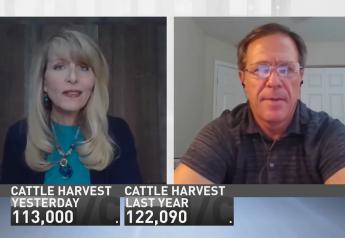Unspoken Truths About Pests: Soybean Aphids

Be on the lookout for this mother of clones
Imagine a pest that can arrive unannounced, suck your soybean plants dry and then double in numbers in two days. Behold the soybean aphid. This native of Eastern Asia can pack a heavy punch and knock the top of your soybean yields.
Adult soybean aphids are small (less than 1/16" in length), yellow- bodied insects with distinct black cornicles or “tailpipes.” They can be either winged or wingless.
“The soybean aphid is highly variable and erratic,” says Erin Hodgson, Iowa State University Extension entomologist. “Almost every year we can find soybean aphids, but certain conditions make them go exponential and need treatment.”
EXOTIC ENEMY
Soybean aphids lay their eggs in the fall on shrubs called buckthorn. In the spring, they hatch into winged females, which move into soybeans. This is when the pest goes wild.
“The mother can clone itself during in the summer,” says Christian Krupke, Purdue University entomologist. “The clones develop inside the mom, and as long as there is sufficient food, good environmental conditions and few predators, she’ll crank out daughters.”
During this time, aphid populations can grow and even double in two to three days. As these mobs of clones expand, they suck sap out of soybeans, which stunts growth and canopy development. Some leaves might turn gray or black due to mold that grows on the aphid excretions.
Depending on the severity of the soybean aphid population in a field, historical yield losses have ranged from 10% to 15%, Krupke says.
SEND IN THE SCOUTS
Because soybean aphids are an erratic pest that can quickly multiply, control is centered on proper scouting. To assess your fields, check 20 plants in various locations and determine the average number of aphids per plant. The economic threshold is 250 aphids per plant in growth stages R1 to R6.
“That’s quite a few aphids,” Krupke says. “This number is an economic threshold, and it is designed to be below the yield loss level — in other words, it gives you time to apply an insecticide before you lose yield.”
When scouting, Hodgson recommends these tips:
- Focus on the new growth for signs of aphids.
- Look on the undersides of leaves.
- Ants or ladybeetles can be signs soybean aphids are present.
If you spray, strive for 100% kill with applications.
“They are all females giving births to asexual clones,” Hodgson says. “So, you want to eliminate as many as you can. You can hopefully get to that with uniform coverage, high volume and pressure when spraying. To know if it was a profitable application, leave an untreated test strip to evaluate.”

KNOW YOUR RISK LEVEL
Soybean aphids were the No. 1 soybean pest for several years in the early 2000s. However, they now tend to be more of a pest in northern soybean-growing states.
“They don’t do well when it’s hot, and we’ve had hotter summers in the Midwest,” Krupke says. “Plus, their natural enemies, such as the Asian ladybird beetles and a range of diseases, have caught up with them.”
Soybean aphids can migrate during the season via prevailing winds. If you hear of large outbreaks in northern states, be ready, Krupke says.
Read More from the Unspoken Truths About Pests series in Farm Journal.
Sara Schafer knows asking good questions creates the most useful stories. She uses her Missouri farm roots to cover innovative operations, business topics and more.







